HazMat
Hello tenants and landlords, I’m here to discuss “hazmat or hazardous materials” and what it means in a commercial real estate lease. My name is Jenna Zebrowski and I am the attorney behind LawByJZ.com. It doesn’t matter if you’re in an office, a retail center, or industrial lease. Virtually all tenants probably have hazardous materials- like florescent lights or printer toner, even hand sanitizer, as well as traditional things like motor oil or asbestos.
It makes sense to be responsible for only the hazardous materials you bring on the premises, but it doesn’t always work that way. Don’t get stuck cleaning up someone else’s hazmat mess- it’s expensive enough to identify and remediate your own.
Commercial Real Estate Case Study
Hazardous Materials are Everywhere, and Expensive!
Zach was really excited to find the perfect warehouse for his business operations. The landlord even gave him permission to remodel it anyway that he wanted to as part of his lease agreement. The landlord told Zach the roof was original to the building’s construction. Before getting the interior ready for work, Zach’s first order of business was to put some skylights in the roof and to do some general work on the roof insulation. This would provide better conditions for his employees and save on his energy bills.
Zach followed the requirements of the lease and his insurance company and checked with the landlord to make sure that it was safe start construction on the roof, which included removing the current one and penetrating the membrane, to put in the new skylights, and that there weren’t any additional precautions to be taken. The age of the roof was a concern; it was the exactly right age where asbestos was most likely to be present. If asbestos is encapsulated and left alone, it’s not a problem, but when it’s made disturbed and broken out of the capsule, then it is exposed to the air and people can inhale it, which is dangerous, and why it is classified as a hazardous material.
Zach’s workers started on the roof and almost immediately stopped work, because they did indeed find asbestos. Zach went back to his landlord, who said that since Zach found the asbestos, it was his problem. Zach was upset that the workers had been exposed to a potentially dangerous material and the landlord wasn’t taking any responsibility, so he had his attorney review the lease.
The roofers were later able to continue the work, but they had to take additional precautions, and those were going to cost additional money. Fortunately, no one was in danger from the asbestos, but it was dangerous to human health and is further defined by the federal government as a hazardous material, which requires special notification and handling.
The lease defined hazardous materials, and stated that the tenant was not responsible for hazardous materials that existed before the lease term started. Zach was only responsible for any hazardous material that he brought onto the site, such as motor oil or chemicals his company used. The roof was definitely present before the lease started, so it was actually the landlord’s responsibility to fix, and at his cost, too!
